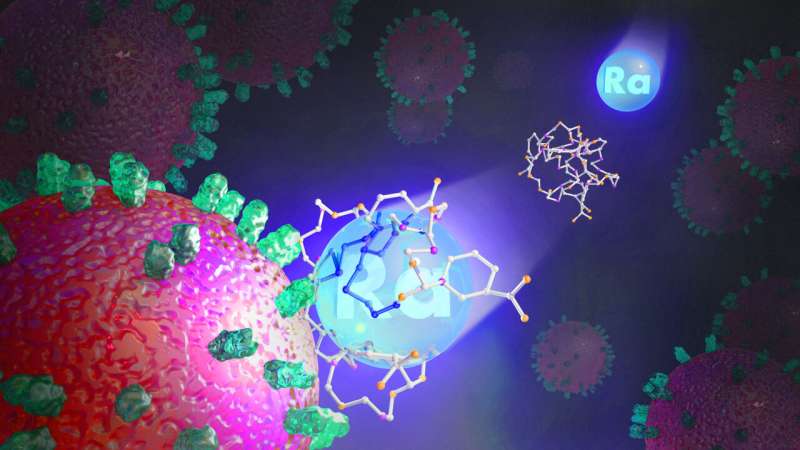Exploring radium's chemistry to advance cancer treatments using ionizing radiation

Researchers at Oak Ridge National Laboratory explored radium's chemistry to advance cancer treatments using ionizing radiation. Their results appear in Chemical Communications.
Radium-223 is a radioisotope used to treat cancer that has spread to bones. Chemically, radium behaves like calcium inside the body and is readily adsorbed by bones, where it destroys cancer cells and lessens pain for patients. Radium therapy has the potential to treat other forms of cancer, but insights on radium's chemistry are needed.
"We can change how radium behaves in the body with chelators or carrier molecules that can target soft tissues instead of bone, but these have been difficult to design due to the challenges of radium studies," said ORNL's Nikki Thiele.
The team captured atomic-level details on radium chelation and discovered a chelator with the highest success ever reported.
"ORNL is one of few places in the world with the expertise and facilities needed to do this research," said Thiele.
More information: Alexander S. Ivanov et al, Elucidating the coordination chemistry of the radium ion for targeted alpha therapy, Chemical Communications (2022). DOI: 10.1039/D2CC03156F
Journal information: Chemical Communications
Provided by Oak Ridge National Laboratory




















